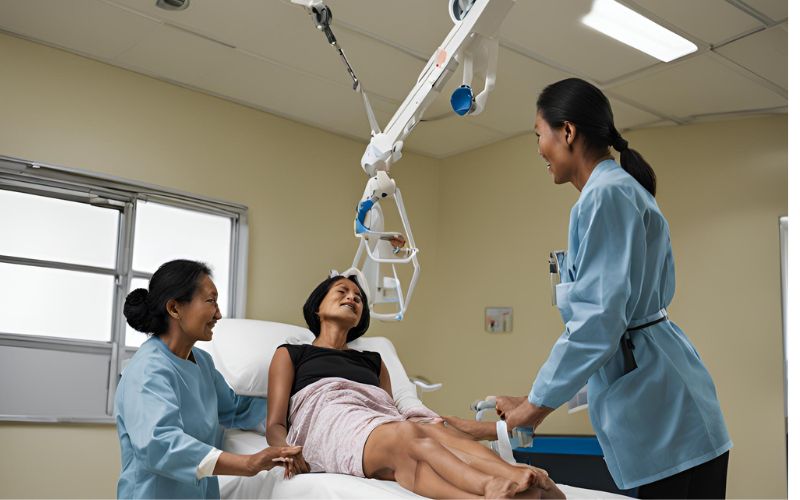As our population ages, the demand for quality elderly care continues to rise. A crucial aspect of this care is ensuring the safety and dignity of elderly individuals, particularly those with mobility limitations. Powered patient hoists have emerged as an indispensable tool in modern healthcare settings, including nursing homes and home care environments.
What are Powered Patient Hoists?
Powered patient hoists are specialized lifting devices designed to assist caregivers in safely transferring patients from one location to another. These hoists are equipped with a sling or harness that securely supports the patient, reducing the risk of injury to both the patient and the caregiver.
Why are Powered Patient Hoists Important?
- Preventing Injuries:
- Caregiver Safety: Manually lifting and transferring patients can lead to severe back injuries for caregivers. Powered hoists significantly reduce the physical strain on caregivers, minimizing the risk of workplace injuries.
- Patient Safety: Improper lifting techniques can cause pain, discomfort, and even serious injuries to patients. Hoists provide a safe and controlled method of transferring, reducing the likelihood of falls and other accidents.
- Maintaining Dignity and Independence:
- Preserving Mobility: By assisting with transfers, hoists help patients maintain a higher level of independence, allowing them to participate in daily activities.
- Promoting Comfort: Hoists can be used to reposition patients in bed or chairs, preventing pressure sores and promoting comfort.
- Improving Efficiency:
- Time-Saving: Powered hoists streamline the transfer process, saving caregivers time and effort.
- Increased Productivity: Efficient patient transfers allow caregivers to focus on providing quality care and other essential tasks.
Key Considerations for Choosing a Powered Patient Hoist:
- Patient Weight Capacity: Ensure the hoist can accommodate the patient’s weight and any additional equipment.
- Lift Height: Consider the height difference between surfaces, such as beds, chairs, and toilets.
- Mobility: The hoist should be easy to maneuver and position.
- Safety Features: Look for features like emergency stop buttons, overload alarms, and battery backup.
- Comfort and Support: The sling or harness should be comfortable and provide adequate support.
Conclusion
Powered patient hoists are essential tools in modern elderly care. By prioritizing patient safety, caregiver well-being, and efficiency, these devices contribute to the overall quality of care. When selecting a hoist, it’s crucial to consider factors like patient needs, caregiver capabilities, and facility requirements. By making informed decisions, healthcare providers can ensure that powered patient hoists are used effectively to enhance the lives of elderly individuals.
